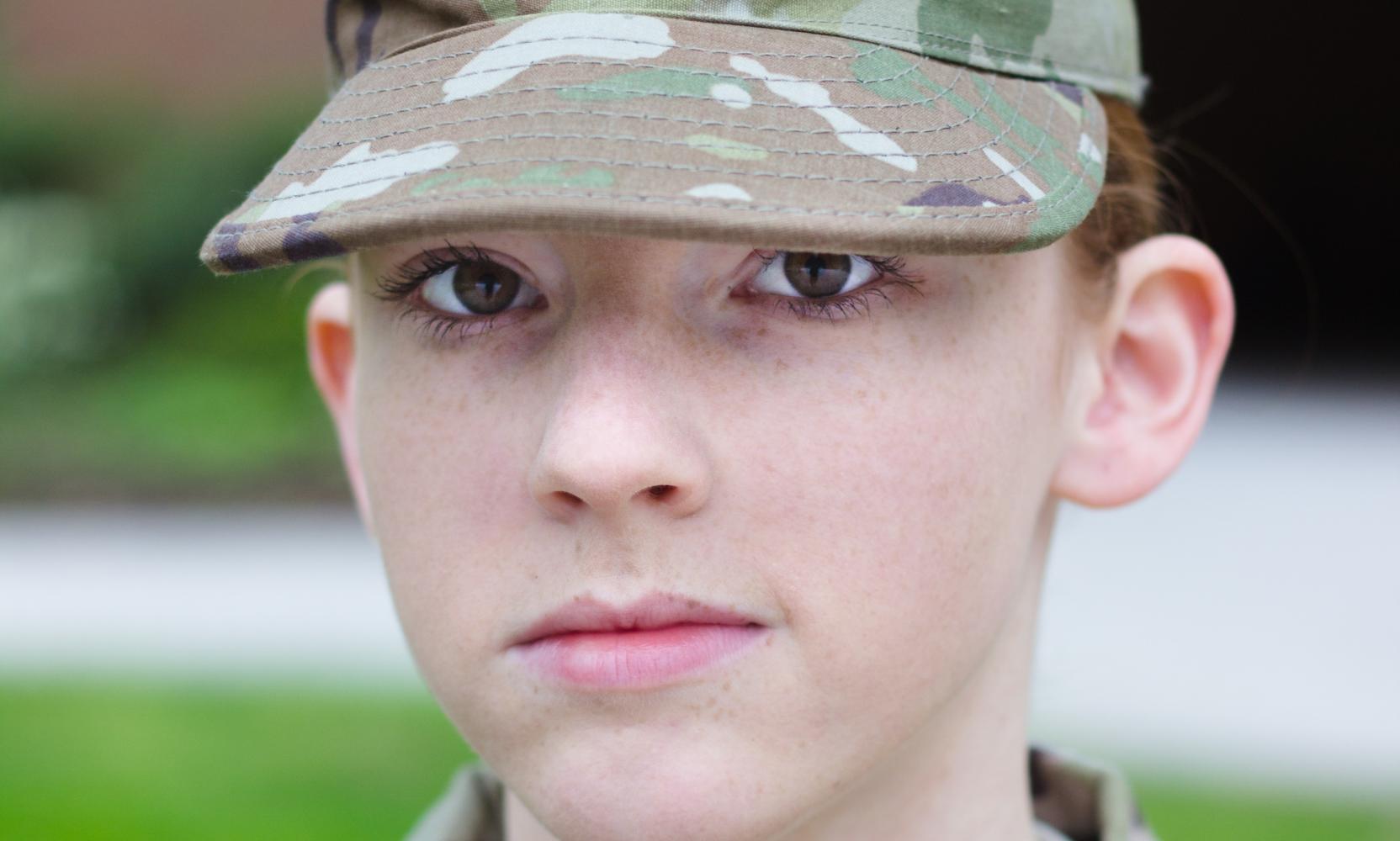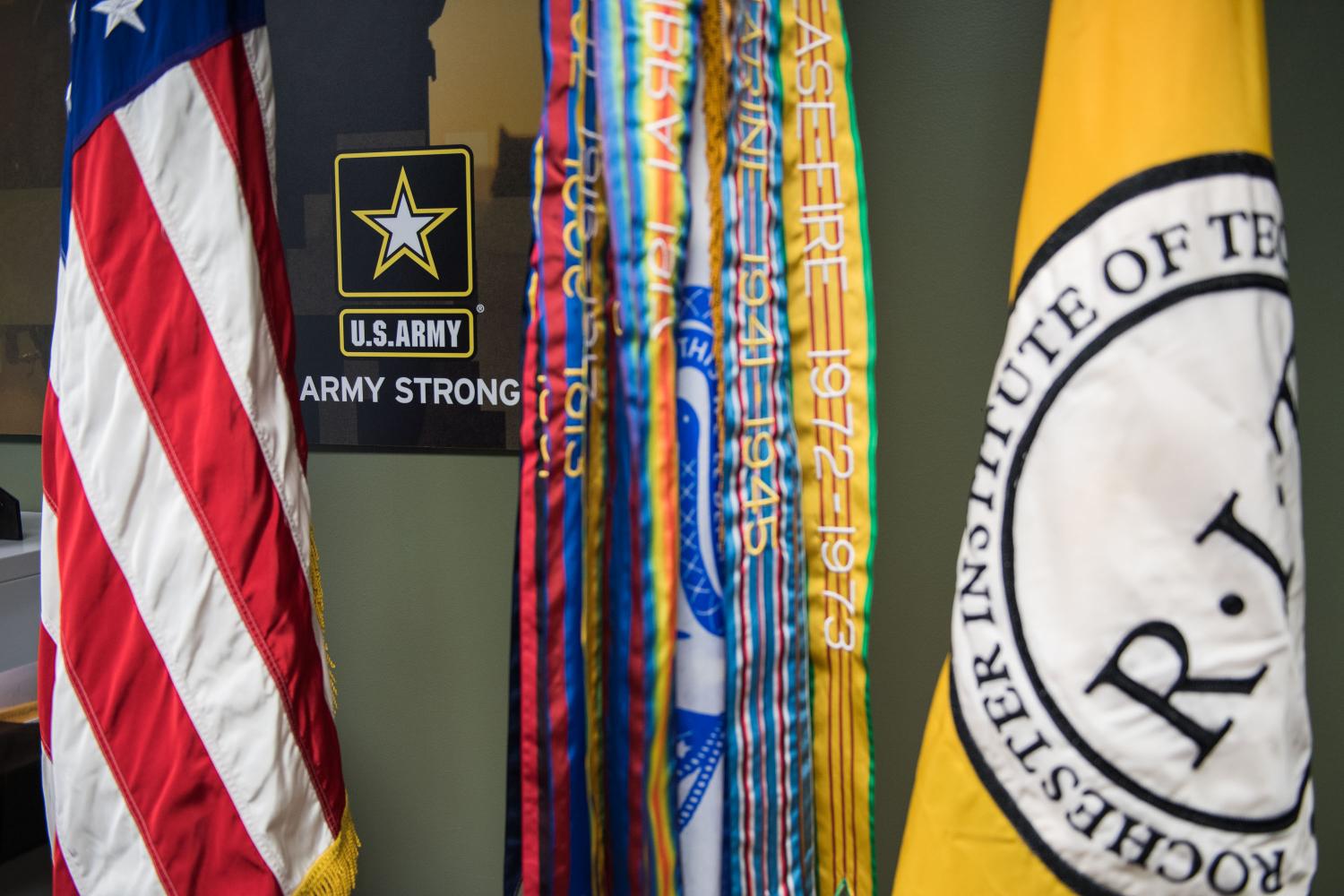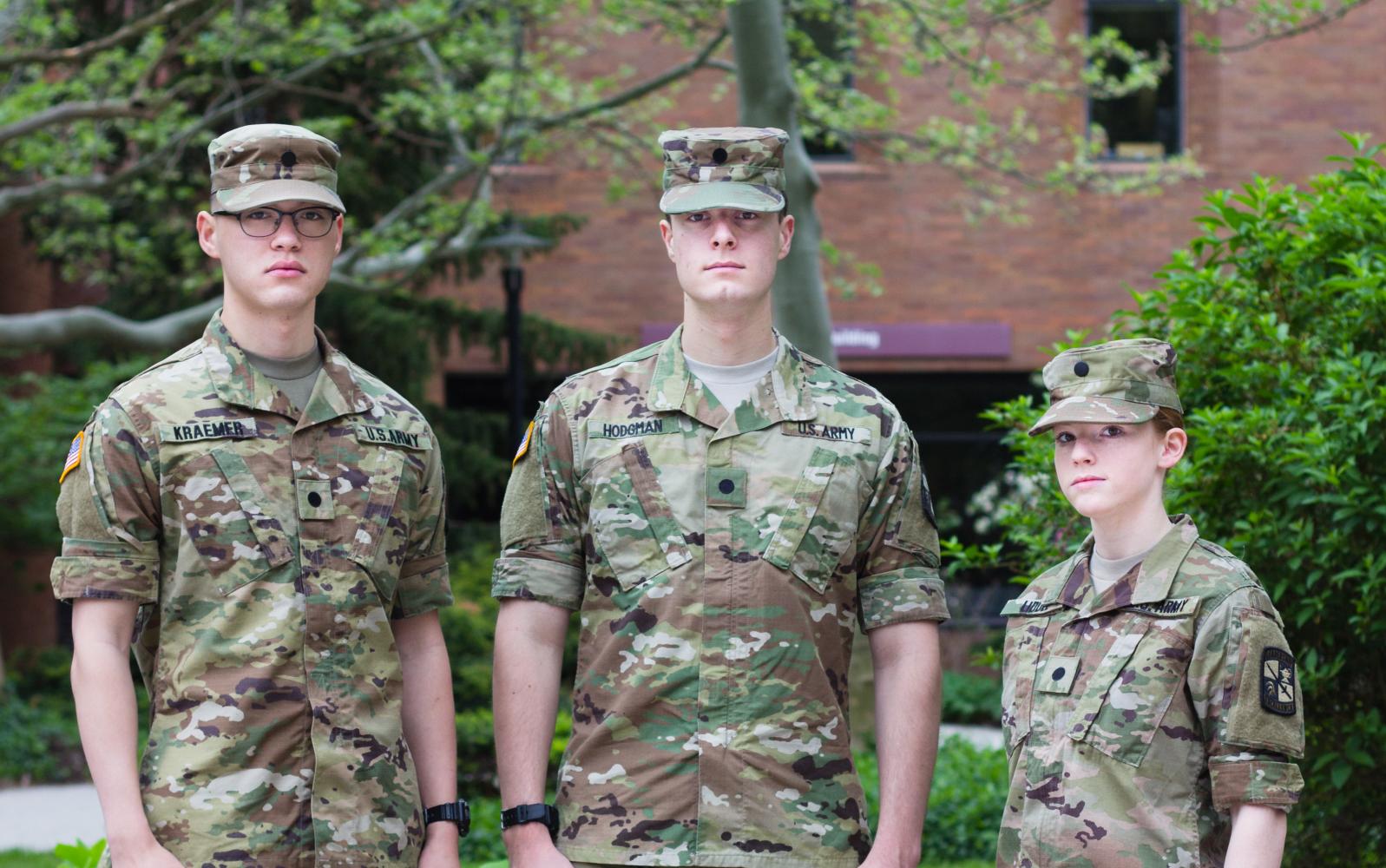Most of us have seen students dressed in different military uniforms walking around campus. Some of us might walk by the ROTC offices and classrooms on our way to our classes in Ross or Brown Hall. A few of us may have even witnessed one of the training or field exercises happening around campus. One way or another we have all seen the ROTC program in action and may have some questions about what the program entails.
What Is It?
ROTC stands for the Reserve Officers’ Training Corps. It is a program installed in both high schools and colleges to train commissioned officers for different branches of the U.S. Armed Forces. RIT offers programs in the U.S. Army, the U.S. Air Force and the U.S. Navy, which are each affiliated with different schools in the surrounding area.
“There are 275 programs country-wide in a wide variety of schools, from small colleges all the way up to the large state universities,” explained Lieutenant Colonel Christopher Otero, a professor of Military Science for the Army ROTC at RIT.
The size of RIT’s program fluctuates every year. It’s seen small numbers, large numbers and right now it is considered a medium-sized program. After a short period of decline, the program is in the midst of expanding again.
“We’re one of the few growing programs out there,” said Otero. “One reason for that is we offer STEM majors.”
Offering these majors has increased the amount of scholarships given to the program, allowing it to reach out to more students. With these impressive but work-heavy majors, cadets must carefully balance their lives.
A Day in the Life of a Cadet
A typical day ranges for each program, but they all entail many of the same general aspects. There is a physical fitness component, an academic component and a leadership component.
“Each week we have generally five days of ROTC,” explained Cadet Samuel Straub, a third year Industrial Design major.
As part of the Navy ROTC, he described what his week typically looks like. The cadets have Naval Science twice a week, which gets more intense and in-depth each year of the program. Also, they have one to three sessions of physical training each week, which usually begin around 6 or 6:30 a.m.
Otero and Cadet Phylicia Matusz, a fourth year Biomedical Sciences major, outlined an average week for the Army ROTC. Typically, the cadets do physical fitness three times a week, sometimes even four days, starting around 6 a.m. Similar to the other programs, they take different military science classes. On Fridays, the cadets have a leadership lab, where they learn tactics and supervision skills.
“Your third year in ROTC is typically your hardest year,” said Matusz. “As a third year, you’re the one responsible. You write all the plans for the training you guys are gonna do, and you execute them as well.”
Along with being in charge of the plans, Matusz explained how third years can be responsible for leading groups of up to 30 cadets at once, depending on the position.
From waking up at dawn to work out to learning how to lead a group of peers, each cadet has a lot on their plate throughout their college years.
What Happens After College
ROTC does not end after you get your diploma. The point of the program is to train for the armed forces, meaning there is a commitment to the U.S. Military after college. Depending on the program, there are different options and protocols, but each branch does require years of service.
“When you graduate, you’re going into the army and we choose where you go to. We pay attention to preference ... and we try to get people into the branch that they want,” explained Otero.
For the U.S. Navy, cadets owe at least five years of active duty as a naval officer. For the U.S. Army, there are a few different options. One of the options is four years of active duty and then four years in what’s called the Visual Ready Reserve, which is more of an on-call program.
Otero described one of the other options in more detail. “One thing that is unique that we offer is at your third year we ask you if you want to go into Reserves National Guard,” he said.
This option entails an eight-year commitment, including your basic training, one weekend a month and then being on call if ever needed. This option allows for the cadets to have a more civilian-like lifestyle and a non-military career during their duty time.
How Do They Do It?
For such a great commitment, both during school and afterward, there is a lot to take into consideration for joining. From the outside looking in, it sometimes can be unthinkable to why or how someone can take on such a workload on top of their already jam-packed school schedule. The cadets often go through the same thought process as they are taking on this challenge.
"The question then becomes, 'Why would anybody wanna do this?'”
"The question becomes, 'Why would anybody wanna do this?'" Otero said.
Both the cadre and cadets have very similar answers on what pushes everybody through this type of commitment. One of the big ones — and most known to the general public — is the scholarship money.
“We pay for everything,” said Otero, describing the scholarships offered. “We pay for all tuition, we pay for books and fees ... if you have a scholarship from high school we do pay for room and board.”
"On top of that, we also pay a stipend every month — $200 in the first year, $300 in the second year, $400 on the third year and $500 on the last year,” he went on to elaborate.
The financial benefits are a main factor, but many other important considerations come into play as well. From being a part of something to honoring and serving your country, motivation comes from a wide variety of sources for these cadets.
“There are a lot of people in the program who don’t have the scholarship and have to work really hard,” described Straub. “There are quite a few people, especially freshman year, who don’t have scholarships and are still willing to work for it.”
Matusz echoed Straub when describing her own experience. “The one thing that got my class through this past year at least was the fact that we were all in it together," she said. "The team environment is really what helps push through anytime you’re struggling.”
The teamwork and collaboration is a common pattern seen throughout the ROTC program.
"This becomes a family for a lot of my kids. This becomes their fraternity, sorority, social club, social outlet."
“We have an intrinsic need to belong to something ... whether it be a newspaper magazine, or whether it be a fraternity or whether it be a sports team, we all want to belong to something,” explained Otero. “This becomes a family for a lot of my kids. This becomes their fraternity, sorority, social club, social outlet.”
Straub agreed. “It offers a great support system through college,” he said. "Yeah, it’s going to be really difficult and you have to study and have these requirements, but there’s a great support system. If you’re having trouble, you can ask basically anybody in the battalion and they will help you — or at least they’ll find someone who can.”
This idea of having people to count on and something to belong to is often what college-aged students are looking for.
“When there’s a chance for a real connection, to be part of a group, and to be part of something, I find that much more than my generation, millennials really go for it,” admitted Otero. “I think that ROTC really provides that for a lot of people ... because with today’s mediated technological environment, I do think that is one challenge millennials have.”
Along with the tight-knit family aspect, cadets are often motivated by more personal reasons as well. Another common reason for joining and keeping with the commitment is simply honor of serving the country and serving others.
“What I tell people is — come for the money, but stay for the patriotism,” said Otero. “Don’t feel bad that you’re doing it for the money, but stay because you, in the process of doing it, ended up believing in the mission.”
Most of the cadets have this mindset already going in. Straub, who did not consider the Navy as an option before his senior year of high school, started to see more and more of what it meant to be a part of the Navy as he dove deeper in his research.
“A lot of [the Navy’s] missions are humanitarian aid where we go places where people are in trouble, and we get them the supplies they need or we get them the help they need. I really like being committed to people that way,” explained Straub. "Not only helping people in different countries, but here as well. If I am training to be an officer, it’s my job to lead the enlisted members, and when I’m a leader I have to take care of them, I have to make sure they are doing well. That's something that I think is very important and I’m glad to do.”
Matusz also explained her personal reasons for joining and what helps her continue to push herself through the journey. Coming from a military family, she always knew she would someday be a part of the armed forces one way or another.
"I just wanted to continue the legacy of my family and serve my country,” she explained. “A lot [of] times people want to make it, because it is an honor.”
However, no matter what program or branch it is, it is important to remember this is by no means an easy thing to do. The hard work and effort put in by these cadets every single day is something to admire.
“You definitely need to have a winning mindset,” said Matusz. “That’s part of the reason why most people join the army ... to test themselves [and] challenge themselves, so as long as you’re able to to do that, you’ll be fine.”
Otero had similar thoughts. “Frankly, the Army’s not for everybody — and that’s not a matter of superiority or matter of a put down for anybody, it’s just that it’s a very unique career field and there are people out there that are suitable for it and there are people out there that aren’t,” he said.
Clearly, deciding to join ROTC is a deeply personal choice. Yes, those 6 a.m. wake-up times are challenging. With that being said, the cadets who do put in the time often find that the program instills them with leadership and life skills that they still carry with them long after it is over.
"ROTC provides you with a lot of opportunities," Matusz explained. And those opportunities go much further than just four or five years during college.










